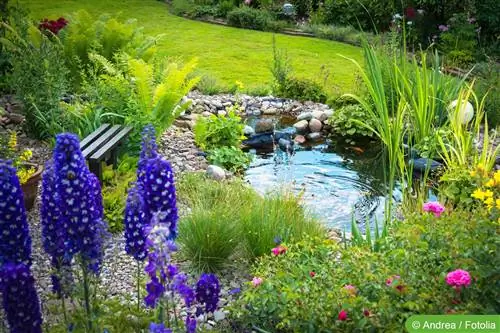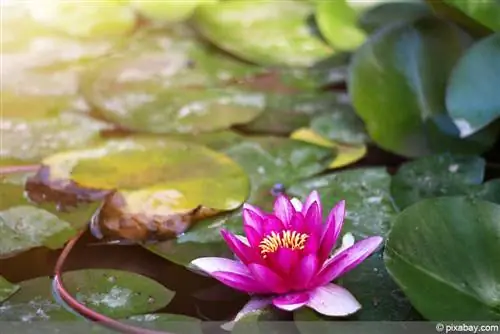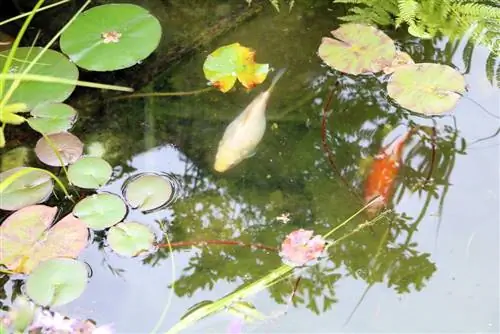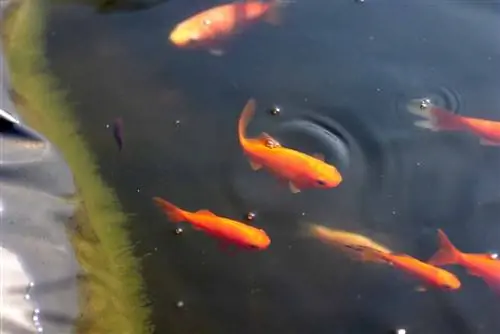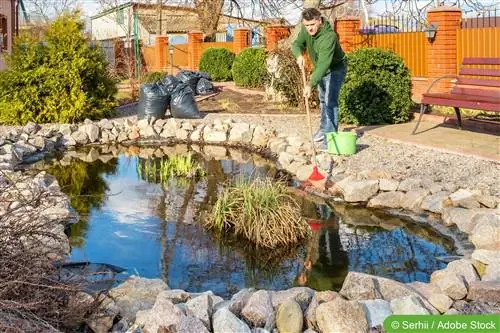- Author admin [email protected].
- Public 2023-12-17 03:39.
- Last modified 2025-01-24 12:45.
Pond edge planting is not only crucial for the appearance, but also for the functioning of the ecosystem in the garden pond. We show what needs to be taken into account.
What type of pond should it be?
This is a crucial question. Should it be a water lily pond, a koi pond, a natural pool, a swimming pond or something similar? Should it be a prefabricated pool or a liner pond? Is a stream planned, a waterfall, a fountain or water features, lighting and much more? Different filters and filter techniques are required for different ponds, but the plants also look different.
The decisive factor for planting the pond edge is the location, the position of the pond, its size, its depth, its different zones and much more.
Planting tips
For a beautiful overall picture, you should always plant low plants in the foreground, otherwise they will be hidden by taller ones. The view of the pond and the water surface should remain clear, otherwise you won't get anything out of it.
In order to achieve a long flowering period for the pond edge plants, you should mix early and late flowering plants, so that something is always blooming from spring to autumn. The color combination is also important for the overall picture. Grasses and plants with very different leaf shapes and colors look beautiful.
So that the edges of the pond do not quickly become overgrown, you should not plant too densely when replanting. It may seem a bit bare at first, but it quickly becomes denser. Under ideal conditions, the plants multiply and enlarge on their own.
The garden pond can quickly become flooded, for example after a lot of rainfall. Plants that grow in this area must be able to cope well with moisture. But they also have to be able to live with drought just as well. Not all plants cope equally well with these conditions. So care is important when choosing. In small ponds you should not use plants that multiply quickly, otherwise the water will soon no longer be visible.
Plants for bankside planting
The riparian zone is a wet zone. Not all plants like this. Grasses generally work very well as pond edge plants. There is a large selection in different heights, which is ideal. Cotton grass, marsh rushes and moor rushes are particularly easy to care for. Also brook carnation root, iris, fever clover, yellow loosewort, fir fronds, daylilies, rose primroses, lady's mantle, hostas, fairy flower, water doth, purple loosestrife, lady fern, worm fern, stuffed swamp yarrow, yellow-leaved pennywort, yellow jugweed, large meadowsweet, autumn gentian, hanging spar, Jacob's ladder, Cuckoo campion, Japanese sedge, long-leaved speedwell, masterwort, morning star sedge, pennywort, low snakehead, low Jacob's ladder, Polei mint, magnificent carnation, giant sedge, speedwell, red-leaved loosestrife, red angelica are well suited. Of course, you always have to pay attention to whether the plants prefer to be in the sun or in the shade. They can all cope with the humidity.

